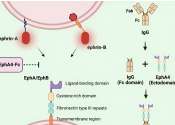New drug reduces vascular leak and endothelial cell dysfunction in mice with sepsis
A new drug could prevent sepsis-related organ failure and death by restoring the health of a patient's blood vessels. Researchers from The University of Queensland and the Queensland Children's Hospital (QCH) have successfully ...
May 9, 2024
0
9









